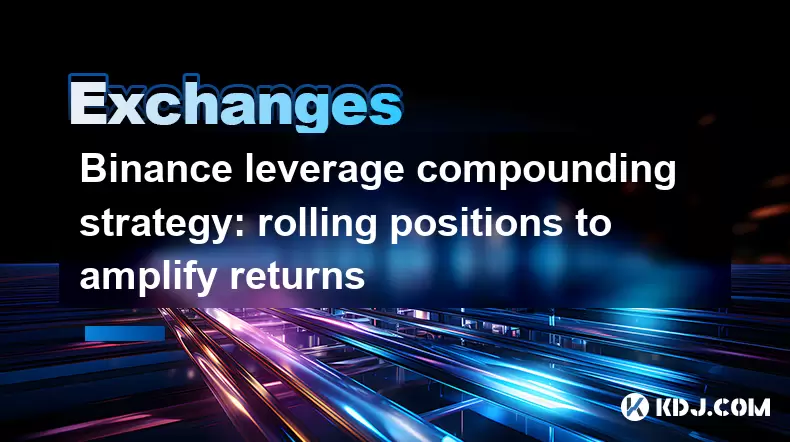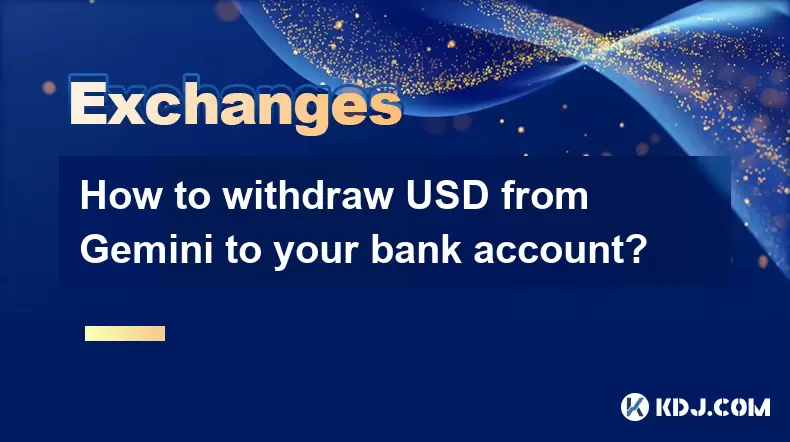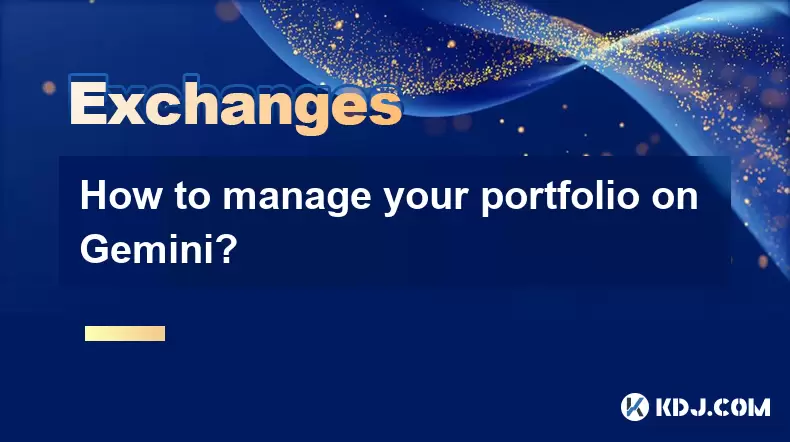-
 Bitcoin
Bitcoin $115000
0.12% -
 Ethereum
Ethereum $3701
4.50% -
 XRP
XRP $3.081
2.99% -
 Tether USDt
Tether USDt $0.0000
-0.01% -
 BNB
BNB $767.9
1.45% -
 Solana
Solana $169.5
3.13% -
 USDC
USDC $0.9999
0.01% -
 Dogecoin
Dogecoin $0.2106
4.30% -
 TRON
TRON $0.3334
1.62% -
 Cardano
Cardano $0.7564
2.54% -
 Stellar
Stellar $0.4165
0.76% -
 Hyperliquid
Hyperliquid $38.75
0.25% -
 Sui
Sui $3.593
3.00% -
 Chainlink
Chainlink $17.08
3.59% -
 Bitcoin Cash
Bitcoin Cash $573.6
4.35% -
 Hedera
Hedera $0.2508
-0.84% -
 Avalanche
Avalanche $23.07
6.46% -
 Ethena USDe
Ethena USDe $1.001
-0.02% -
 Litecoin
Litecoin $120.8
8.17% -
 UNUS SED LEO
UNUS SED LEO $8.943
-0.32% -
 Toncoin
Toncoin $3.400
-5.60% -
 Shiba Inu
Shiba Inu $0.00001255
1.54% -
 Uniswap
Uniswap $9.908
6.32% -
 Polkadot
Polkadot $3.718
2.10% -
 Monero
Monero $303.0
-0.74% -
 Dai
Dai $0.9999
-0.02% -
 Bitget Token
Bitget Token $4.392
0.91% -
 Cronos
Cronos $0.1403
6.31% -
 Pepe
Pepe $0.00001076
1.13% -
 Aave
Aave $267.2
1.80%
Binance leverage compounding strategy: rolling positions to amplify returns
The Binance leverage compounding strategy uses borrowed funds to boost returns by reinvesting profits into larger leveraged trades, but it carries significant risk due to liquidation and market volatility.
Jun 16, 2025 at 05:56 pm

What Is Binance Leverage Compounding Strategy?
The Binance leverage compounding strategy involves using borrowed funds on the Binance Futures platform to increase exposure and potentially magnify returns. This method typically requires rolling open positions while reinvesting profits into larger trades. Traders who successfully implement this approach can grow their capital exponentially, but it also carries a high degree of risk due to the nature of leveraged trading.
In essence, compounding occurs when realized profits from a successful trade are used to open a new, larger position with the same or increased leverage. The process repeats as long as the market moves in the trader's favor. It’s crucial to understand that losses can also compound rapidly under this model.
How Does Leverage Work on Binance Futures?
To effectively apply a compounding strategy, traders must first understand how leverage works on Binance Futures. When you open a futures contract, you're essentially borrowing funds to increase your position size beyond what your account balance would normally allow. For example, if you have $100 in your account and use 10x leverage, you can control a $1,000 position.
The key here is liquidation risk—if the market moves against your position and your equity drops below the maintenance margin level, your position will be automatically liquidated. This makes risk management an essential part of any compounding strategy.
Steps to Implement the Rolling Position Compounding Strategy
To execute the Binance leverage compounding strategy, follow these steps:
- Start with a small base capital: Begin with a conservative amount of funds to minimize initial risk.
- Open a leveraged position: Choose a cryptocurrency pair such as BTC/USDT and set a suitable leverage (e.g., 5x–20x).
- Set a realistic take-profit level: Aim for a modest profit target, such as 5%–10%, depending on market conditions.
- Close the position upon hitting take-profit: Once the target is reached, close the trade and realize the profit.
- Reinvest the profit into a larger position: Use the total available balance (initial capital + profit) to open a new, larger trade with the same or adjusted leverage.
- Repeat the process: Continue rolling profits into subsequent trades as long as favorable market movement persists.
Each iteration increases your exposure, which means both potential gains and risks scale accordingly.
Risk Management Considerations in Compounding Strategies
One of the most critical components of the Binance leverage compounding strategy is risk management. Without proper controls, even a few losing trades can wipe out compounded gains. Here are some essential precautions:
- Use stop-loss orders: Always place a stop-loss to limit downside exposure on each trade.
- Limit leverage per trade: Avoid maxing out leverage on every position; higher leverage increases volatility sensitivity.
- Only compound during trending markets: Compounding works best when the asset is in a strong uptrend or downtrend, not during sideways consolidation.
- Maintain a reserve fund: Keep a portion of your capital uninvested to protect against unexpected drawdowns.
These practices help ensure that a single adverse move doesn’t erase previous gains.
Tools and Features on Binance That Support Compounding
Binance offers several tools that make implementing a leverage compounding strategy more efficient:
- Auto-Compound Feature (Third-party bots): Although Binance does not natively support auto-compounding, traders often use third-party bots or scripts to automate the process of closing profitable trades and reinvesting proceeds.
- Take-Profit and Stop-Loss Orders: These order types allow traders to define exit points ahead of time, reducing emotional decision-making.
- Margin Adjustment Options: Traders can manually adjust isolated margins to manage leverage levels dynamically between trades.
- Futures Calculator: Binance provides a tool to estimate liquidation prices and required margin, helping traders plan safer entries and exits.
Understanding and utilizing these features can significantly enhance the effectiveness of a compounding strategy.
Real-Life Example of a Binance Leverage Compounding Trade
Let’s walk through a practical scenario involving the Binance leverage compounding strategy:
- Starting capital: $100
- Leverage used: 10x
- Initial position size: $1,000
- Take-profit level: 10%
- Market direction: Long on ETH/USDT
Step-by-step breakdown:
- Trader opens a $1,000 long position on ETH/USDT with 10x leverage.
- Price moves favorably, and the trader realizes a 10% gain ($100 profit).
- Total balance becomes $200, which is then used to open a new $2,000 position with the same leverage.
- Another 10% gain results in a $200 profit, bringing the total to $400.
- This process continues, with each round doubling the previous position size.
This illustrates how compounding can rapidly grow capital—but also highlights how quickly losses could accumulate if the market turns.
Frequently Asked Questions
Can I Compound Short Positions Using Binance Leverage?
Yes, short positions can also be compounded by following the same principles. Instead of going long, traders open leveraged short positions and reinvest profits after realizing gains. However, bear markets can be more volatile and unpredictable, so extra caution is advised.
What Happens If My Trade Gets Liquidated During a Compounding Cycle?
If a trade gets liquidated, the entire leveraged position is closed at a loss. Depending on the stage of compounding, this may result in significant capital erosion. It’s why setting stop-losses and managing leverage carefully is crucial.
Do I Need to Use the Same Leverage Each Time When Compounding?
Not necessarily. Some traders adjust leverage based on market conditions, trend strength, or risk appetite. However, increasing leverage too aggressively can raise the chance of liquidation.
Is There a Minimum Account Size Required for Compounding on Binance Futures?
There is no official minimum, but starting with a small account increases relative risk due to limited buffer against price fluctuations. A recommended starting point is at least $50–$100 for testing purposes before scaling up.
Disclaimer:info@kdj.com
The information provided is not trading advice. kdj.com does not assume any responsibility for any investments made based on the information provided in this article. Cryptocurrencies are highly volatile and it is highly recommended that you invest with caution after thorough research!
If you believe that the content used on this website infringes your copyright, please contact us immediately (info@kdj.com) and we will delete it promptly.
- Velo Universe, DEX, and DeFi Security: Navigating the Future of Decentralized Trading
- 2025-08-05 09:25:13
- Bitget Wallet Revolutionizes Solana with Gas-Free Transactions: A New Era for DeFi
- 2025-08-05 09:25:13
- Ozak AI, Crypto Boom, and ROI Potential: Is This the Next Big Thing?
- 2025-08-05 09:25:24
- Solana's ETF Hopes & the All-Time High Chase: Is SOL Set to Soar?
- 2025-08-05 09:25:24
- Coinbase's Brian Armstrong and the Art of Focused Work: A Deep Dive
- 2025-08-05 09:25:30
- Uniswap Price Prediction: Bullish Reversal on the Horizon?
- 2025-08-05 09:25:30
Related knowledge

How to set and manage alerts on the Gemini app?
Aug 03,2025 at 11:00am
Understanding the Gemini App Alert SystemThe Gemini app offers users a powerful way to stay informed about their cryptocurrency holdings, price moveme...

How to use the Gemini mobile app to trade on the go?
Aug 04,2025 at 09:14am
Setting Up the Gemini Mobile AppTo begin trading on the go using the Gemini mobile app, the first step is installing the application on your smartphon...

What to do if you forgot your Gemini password?
Aug 04,2025 at 03:42am
Understanding the Role of Passwords in Gemini AccountsWhen using Gemini, a regulated cryptocurrency exchange platform, your password serves as one of ...

What are the websocket feeds available from the Gemini API?
Aug 03,2025 at 07:43pm
Overview of Gemini WebSocket FeedsThe Gemini API provides real-time market data through its WebSocket feeds, enabling developers and traders to receiv...

How to withdraw USD from Gemini to your bank account?
Aug 04,2025 at 11:01am
Understanding Gemini and USD WithdrawalsGemini is a regulated cryptocurrency exchange platform that allows users to buy, sell, trade, and store digita...

How to manage your portfolio on Gemini?
Aug 03,2025 at 10:36am
Accessing Your Gemini Portfolio DashboardTo begin managing your portfolio on Gemini, you must first log in to your account through the official websit...

How to set and manage alerts on the Gemini app?
Aug 03,2025 at 11:00am
Understanding the Gemini App Alert SystemThe Gemini app offers users a powerful way to stay informed about their cryptocurrency holdings, price moveme...

How to use the Gemini mobile app to trade on the go?
Aug 04,2025 at 09:14am
Setting Up the Gemini Mobile AppTo begin trading on the go using the Gemini mobile app, the first step is installing the application on your smartphon...

What to do if you forgot your Gemini password?
Aug 04,2025 at 03:42am
Understanding the Role of Passwords in Gemini AccountsWhen using Gemini, a regulated cryptocurrency exchange platform, your password serves as one of ...

What are the websocket feeds available from the Gemini API?
Aug 03,2025 at 07:43pm
Overview of Gemini WebSocket FeedsThe Gemini API provides real-time market data through its WebSocket feeds, enabling developers and traders to receiv...

How to withdraw USD from Gemini to your bank account?
Aug 04,2025 at 11:01am
Understanding Gemini and USD WithdrawalsGemini is a regulated cryptocurrency exchange platform that allows users to buy, sell, trade, and store digita...

How to manage your portfolio on Gemini?
Aug 03,2025 at 10:36am
Accessing Your Gemini Portfolio DashboardTo begin managing your portfolio on Gemini, you must first log in to your account through the official websit...
See all articles

























































































